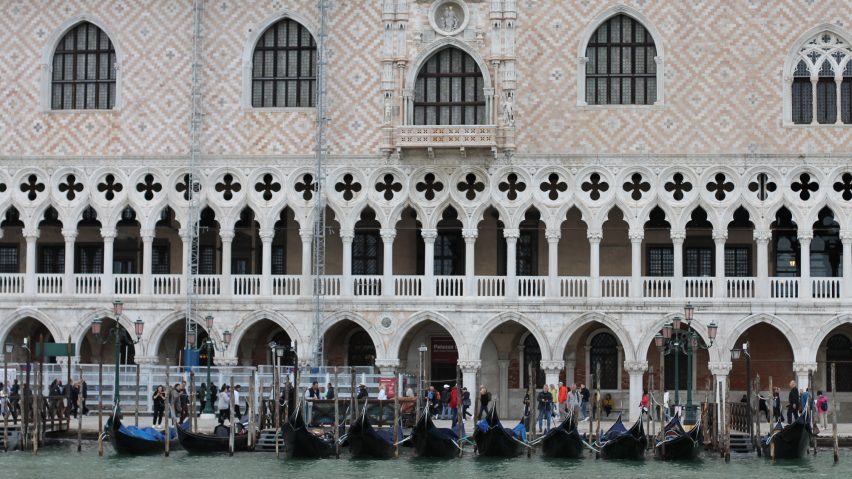
Day three from Venice Architecture Biennale
The Dezeen team have been reporting from the 18th international architecture biennale in Venice, curated by Lesley Lokko. Read on for all the coverage from the third and final day (Friday 19 May)
5:30pm Ahead of the official presentation ceremony tomorrow morning, Dezeen digital editor Rupert Bickersteth spoke to Golden Lion for Lifetime Achievement-winner Demas Nwoko.
The Nigerian-born artist, designer and architect, when asked about the challenge for the future of architecture in Africa said "I don’t see any positive attributes to the architecture that Europe brought to Africa. Nothing has been built yet [in Africa]."
He continued "it would be too much to think that the people who brought us to this impoverished state are the ones who are going to volunteer to repair it".
Read the full interview "Nothing has been built yet in Africa" says Venice Golden Lion-winner Demas Nwoko
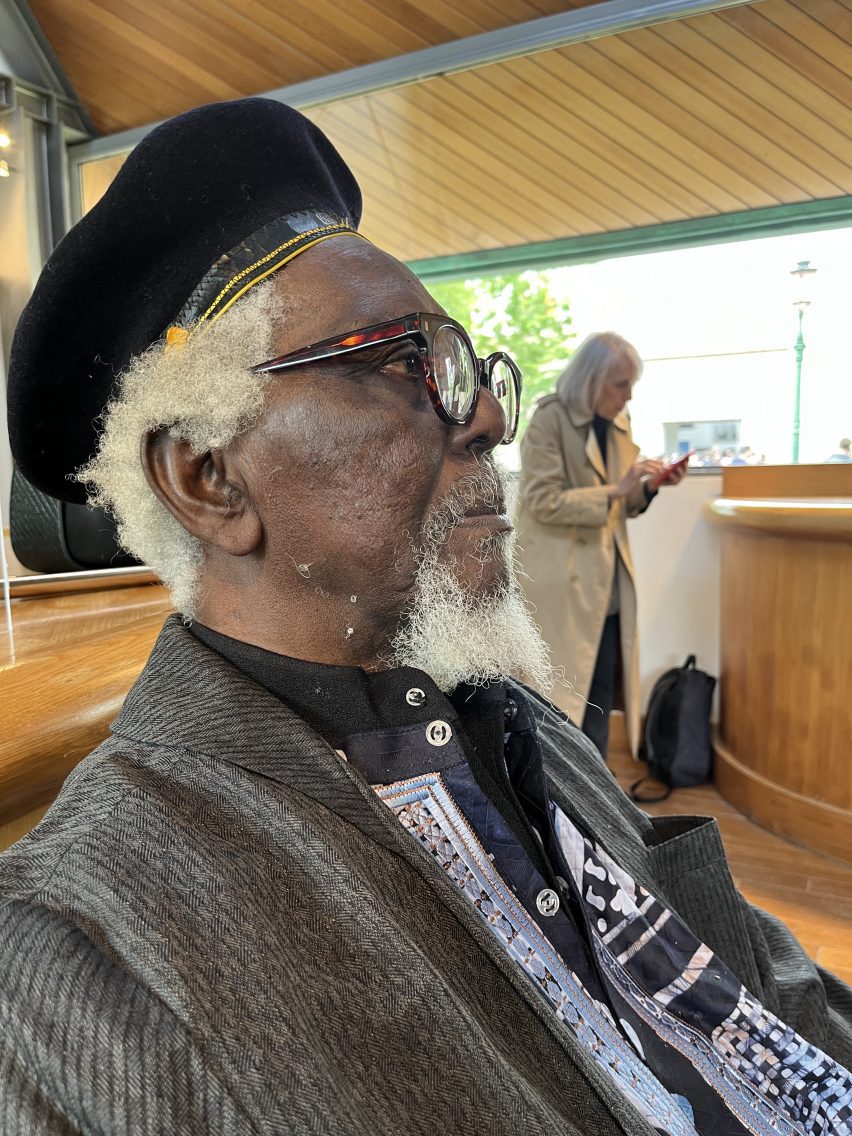
5:00pm The Estonian pavilion at this year's Venice Architecture Biennale is a rental apartment with a live-in actor who is performing daily rituals to explore the challenges of home ownership.
Titled Home Stage, the exhibition challenges the contradiction of a home being both a living space and a piece of real estate.
For nine months, different actors will each spend a month living in the apartment, carrying out both scripted and unscripted performances that explore tensions between these two functions.
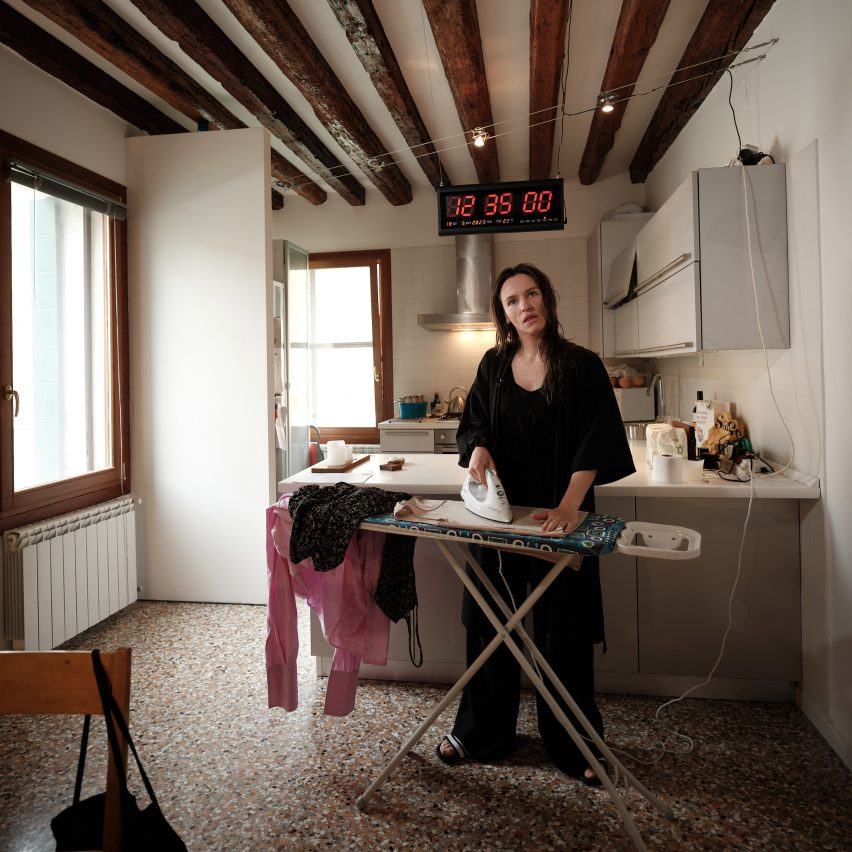
3:00pm Dezeen's architecture editor Lizzie Crook caught up with Sámi-Norwegian architect Joar Nango at the Nordic Pavilion, where he is exhibiting his archive of books that he has collected over 15 years exploring Indigenous architecture.
His hope for the exhibition is to give a platform to, and raise awareness of, the architecture of Sámi people, which he believes is typically presented in a "folkloristic way" or "erased from the whole narrative".
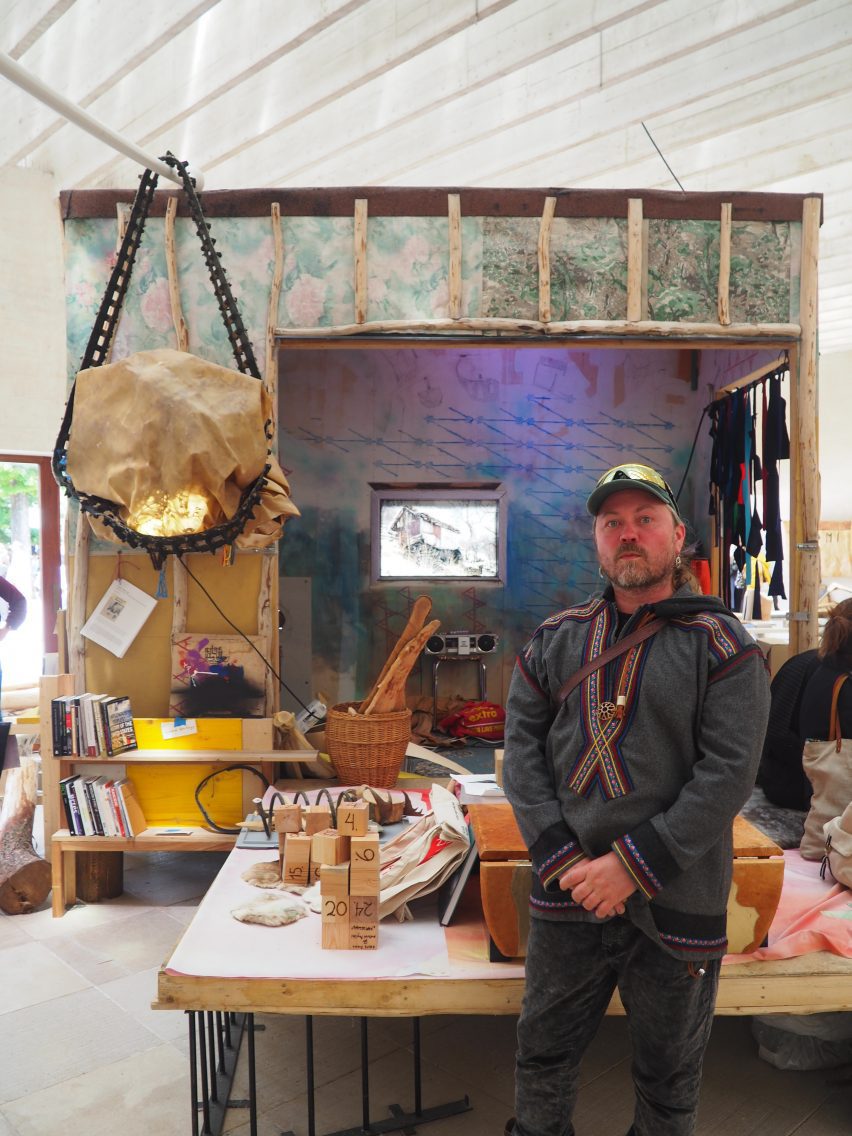
"Sami architecture is something that we need to talk about, we need to understand what it is and to create a social network around it, we need to dive deeper into it, we need many people involved in it," he told Dezeen.
"The architect, as a field, needs to learn to listen more to the nuances in the cultural complexity of things, and the importance of also landscape resources around us."
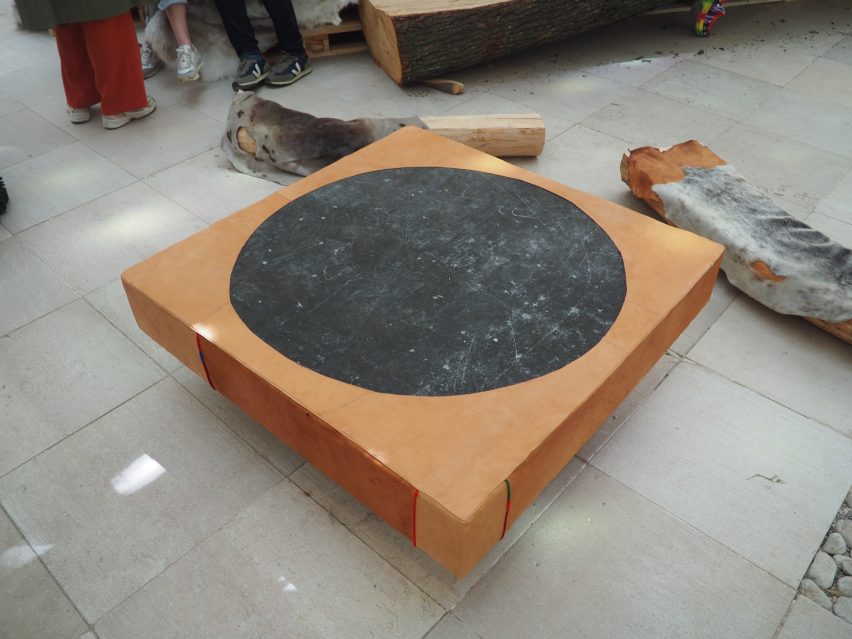
For him, the highlight of the exhibit is a table placed at its centre. It is made of a stone from the old floor of the Nordic Pavilion, elevated on stone salvaged from the facade of the US Pavilion and covered with reindeer skin.
"For me, taking something coincidentally found on the site, giving it care and love, and lifting it up to become something important is architectural and material poetry," he said.
"For me, this carries a lot of stories about how to build and how to relate to the material world."
More on the Nordic Pavilion to follow.
1:00pm While waiting to interview Golden Lion for Lifetime Achievement-winner Demas Nwoko, Dezeen digital editor Rupert Bickersteth spoke with Pritzker Prize-winning Francis Kéré.
Kéré, commenting on Lesley Lokko's "Laboratory of the Future" biennale, said "the dialogue between pavilions and the way they have all embraced and explored the theme together is very impressive".
Demas Nwoko exclaimed "now I can die as happy man" as Kéré knelt before him and then embraced him.
Stay tuned for more to come following the interview with Nwoko.
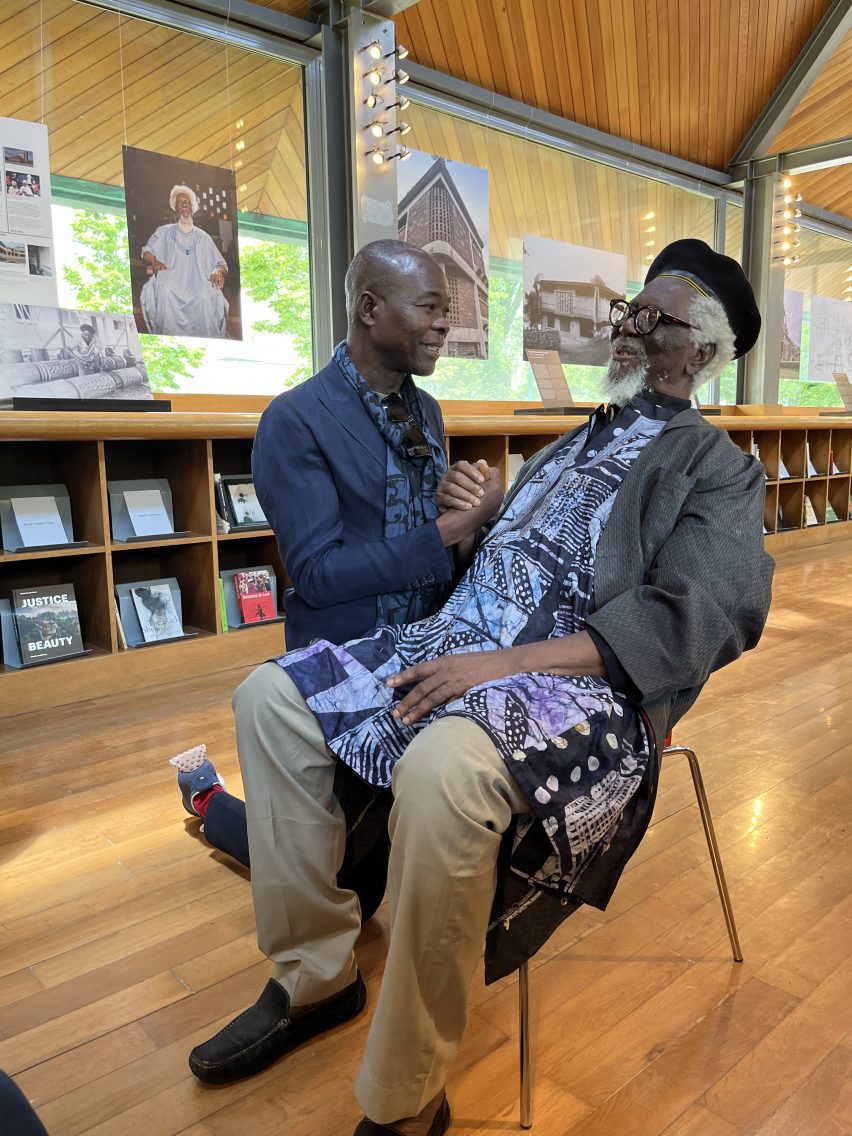
11:30am Dezeen digital editor Rupert Bickersteth is in attendance at the World Economic Forum's symposium launching the Davos Baukultur Alliance.
What is needed is a level of unprecedented collaboration
The alliance was created to accelerate the adoption of high-quality "baukultur" to help tackle the pressing challenges facing communities across the globe, most notably the growing cost of living crisis.
"Baukultur" is shorthand for the preservation and development of quality, sustainable and culturally relevant buildings and cities.
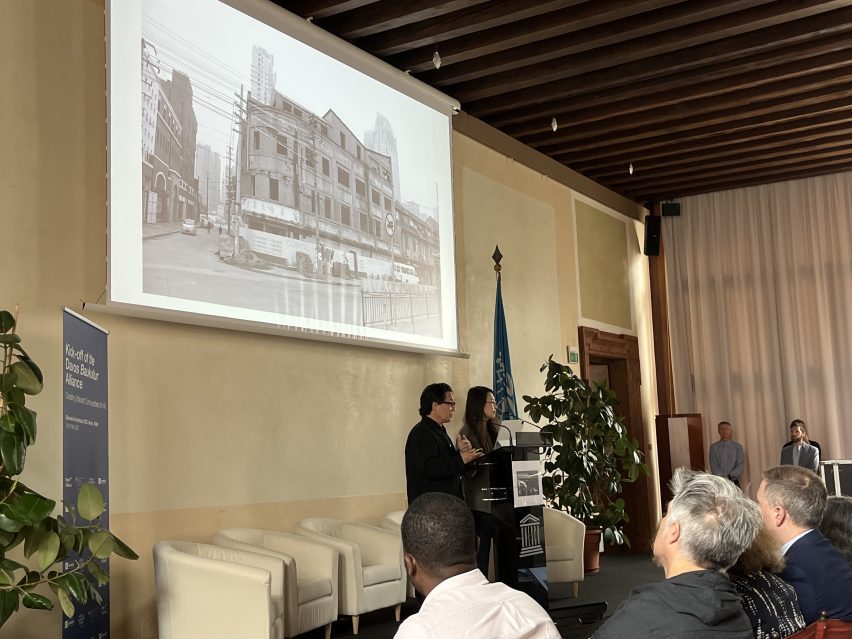
"What is needed is a level of unprecedented collaboration," said Holcim's Cédric de Meeûs during a panel discussion as he called for architects, engineers, data scientists, sustainability experts, policy makers and the energy sector – among others – to come together to advance baukultur.
MASS Design Group's Christian Benimana gave a presentation where he talked about how "most of our buildings cannot help us in a pandemic, as Covid-19 showed us" and how learning from the pandemic must positively influence future design practice.
Pritzker Prize winner Alejandro Aravena of Elemental also presented.
The Davos Baukultur Alliance has been launched by Switzerland and the World Economic Forum as a multi-stakeholder global alliance dedicated to advancing quality design and construction of more sustainable and vibrant communities.
11:00am This morning, the Serpentine and Bloomberg Philanthropies hosted the Webs of Architecture panel discussion at the Biennale Library. Dezeen architecture editor Lizzie Crook was in attendance.
Moderated by Swiss art curator Hans Ulrich Obrist, it saw architects Norman Foster, film director Liam Young, David Adjaye, Lina Ghotmeh and Sumayya Vally come together with Golden Lion-winner Demas Nwoko to discuss the past, present and future of architecture.
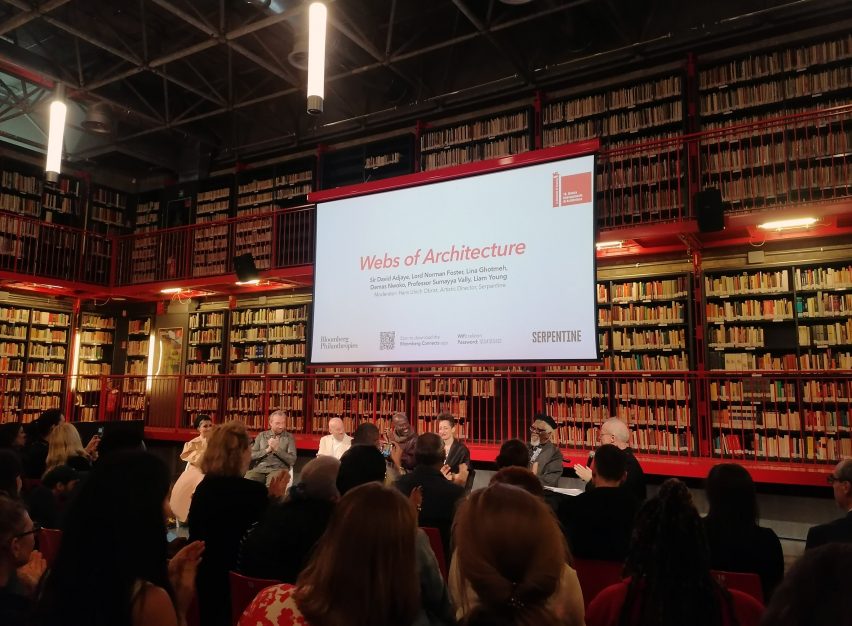
Adjaye praised Nwoko for his work and told the audience how he is directly referencing his design of the Benin theatre in the Edo Museum of West African Art, which will sit beside each other.
"[Nwoko's work] just resonates so powerfully with some of the concerns of my generation that we are now picking up," said Adjaye. "The [Benin theatre] is a very direct influence on the project that I'm making," Adjaye continued.
"It's not in use right now but we're very much fighting with the city to restore the project."

Nwoko concluded the conversation by explaining how he believes the future of architecture should be about humans learning to reconnect.
"I think the future is about regaining that humanistic thought that we're losing fast," he said.
"We must reconnect again," he continued. "We've lost our place to the machine."
10:30am The simplest of structures, such as tents and huts, can teach architects lessons, British architect Norman Foster said in an exclusive interview with Dezeen architecture editor Lizzie Crook at the Venice Architecture Biennale.
Read the interview now: "Architecture without architects" can teach valuable lessons says Norman Foster
Speaking to Dezeen at the Ca'di Dio hotel in Venice, Foster said that basic buildings that are created without architects, constructed with local materials and with passive design strategies can all serve as valuable reference points for the industry.
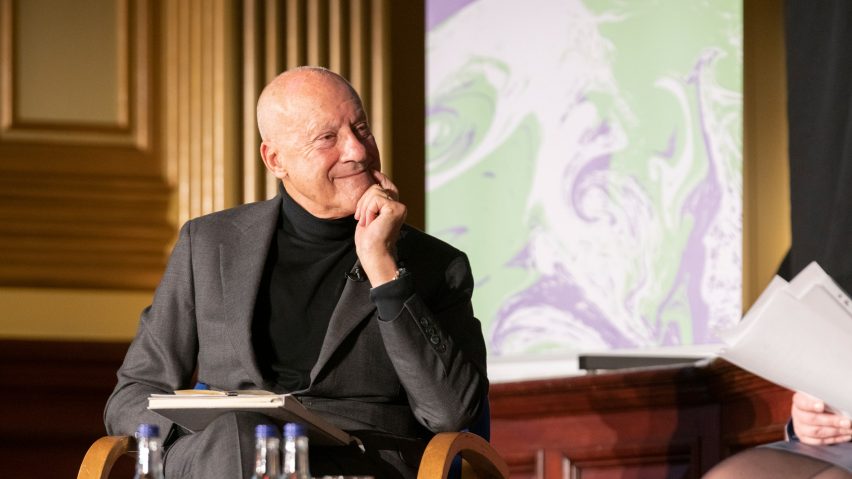
10:00am Also from last night, Dezeen editor-at-large Amy Frearson attended an event titled "Imagining the Future of the Museum: A Conversation with David Adjaye and Glenn Lowry".
The conversation focused on the Kiran Nadar Museum of Art (KNMA), designed by Ghanaian-British architect David Adjaye in collaboration with local studio S Ghosh & Associates.
A common theme in all my work is the way in which you create a path
KNMA is set to be India's largest cultural centre when it opens in Delhi in 2026. The unveiling of a model of the project is part of the curator's special projects at the biennale this year.
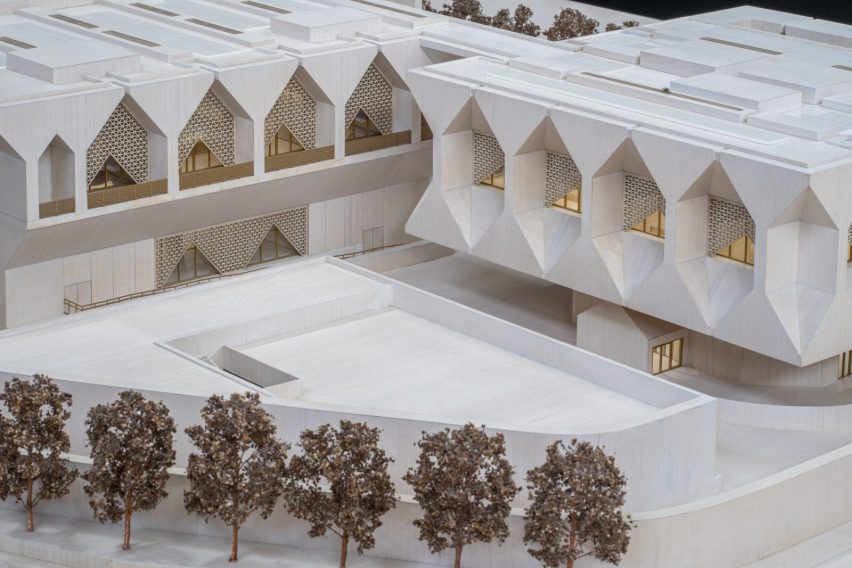
When asked how he imagines the journey of visitors through the spaces he designs, David Adjaye said "A common theme in all my work is the way in which you create a path".
"I want to create paths that are not just about the need of circulation, but are about the kind of delight to discover it," he continued.
Echoing the wider theme of the biennale's "Laboratory of the Future" curated by Lesley Lokko, Adjaye reflected "In my work, I've sort of moved back to Africa, and that's really important to me. In a way, I still feel like Africa is emerging and finding its own voice and identity."
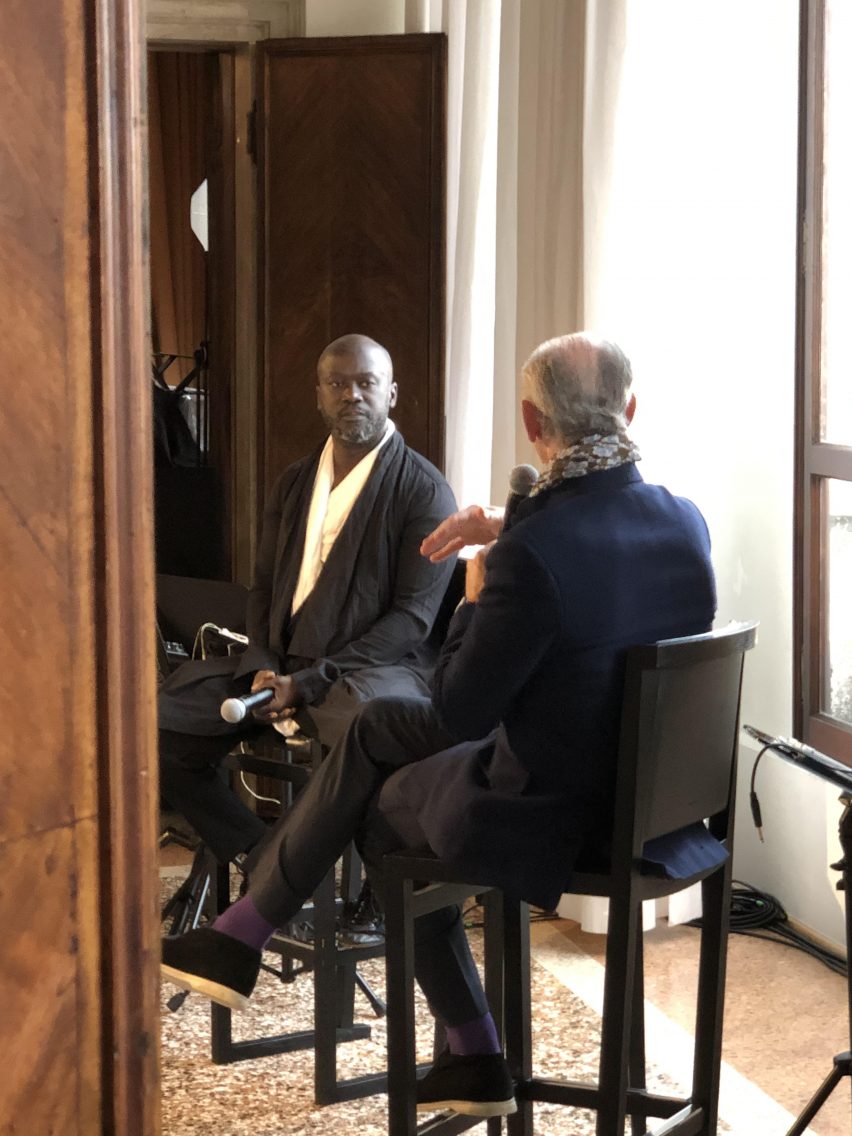
The KNMA museum will cover more than 100,000 square metres exhibiting over 10,000 pieces, and will host changing exhibitions, permanent displays, and performances from across the visual arts, music, dance, and theatre.
Other museums designs by Adjaye Associates include Liverpool's International Slavery Museum and Maritime Museum, the Smithsonian National Museum of African American History and Culture and Princeton University Museum.
9:00am Following the ribbon cutting at the British Pavilion yesterday afternoon, celebrations continued at the opening reception for "Dancing in the Moon" – the title of the exhibition at the pavilion.
Welcome, validate, celebrate
Hosted in the 10th century Chiesetta della Misericordia, featuring a facade restored in 1659, contemporary projections and coloured lighting illuminated the space.
Dezeen digital editor Rupert Bickersteth spoke to curator and senior lecturer in architecture at Central Saint Martins Shumi Bose, who curated the British pavilion at the 15th Venice architecture biennale with Jack Self and Finn Williams.
Bose told Dezeen that the biennale was "full of joy" and that she stood at the ribbon cutting yesterday, seven years after she was holding the scissors, in tears at the celebration of diversity representing the UK in Venice.
"Welcome, validate, celebrate – that's been the message of this year's biennale. It has been wonderful to see the access that so many have had this year to exhibit their talents in conversation and collaboration with their peers."
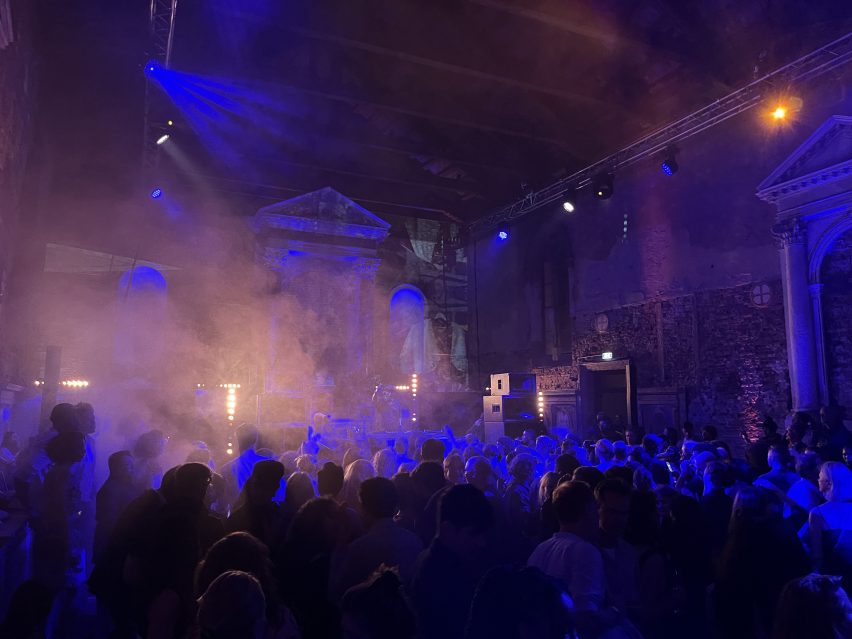
You can read about everything that happened yesterday (18 May) here: Day two from Venice Architecture Biennale and everything from the first day (17 May) here: Day one from Venice Architecture Biennale.
The Venice Architecture Biennale takes place from 20 May to 26 November 2023. See Dezeen Events Guide for all the latest information you need to know to attend the event, as well as a list of other architecture and design events taking place around the world.
All times are Venice time.